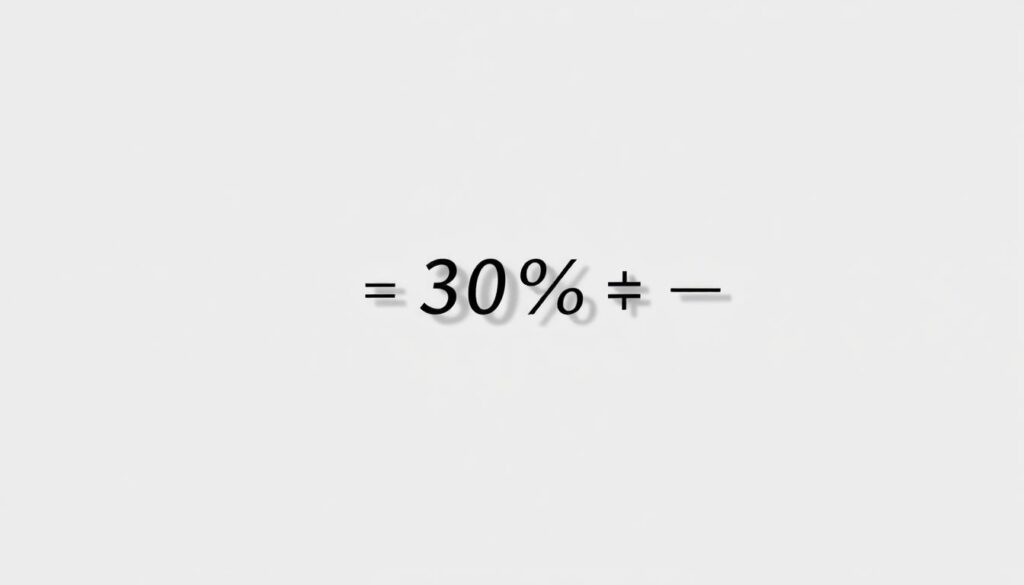Many proprietary trading companies enforce a specific consistency requirement for their traders. This guideline is designed to promote stable performance over time.
It limits the profit a trader can earn from their single best day. The goal is to prevent results from being skewed by one unusually large, and potentially risky, win.
For instance, if a trader’s total profit is $10,000, no more than $3,000 should come from just one trading session. This encourages disciplined risk management and repeatable strategies.
Mastering this concept is essential for long-term success with these firms. It demonstrates a sustainable approach to the markets, which is highly valued.
Understanding the Role of the Consistency Rule in Prop Trading
Successful trading operations rely on frameworks that assess the distribution of gains throughout a trader’s activity. These systems evaluate how earnings accumulate across various market sessions rather than focusing solely on final totals.
Defining Consistency in Trading Performance
Trading performance consistency measures how evenly profits spread across multiple days. It distinguishes sustainable strategies from those dependent on occasional lucky trades.
A consistent approach demonstrates a trader’s ability to execute repeatable methods under different conditions. This shows genuine skill rather than temporary market luck.
Why Prop Firms Value Stable Profit Distribution
Proprietary trading companies prioritize stable profit distribution as a key risk management tool. They analyze daily profit patterns to identify over-leveraged strategies.
This approach helps firms differentiate between traders with sustainable edges and those relying on high-risk gambles. Stable performance indicates scalable, professional trading methods.
By enforcing consistency requirements, these organizations protect their capital while developing trader discipline. The system benefits both the company and the individual trader’s long-term success.
The Fundamentals of the 30% Rule in Prop Firms

Traders must understand the mathematical foundation that governs daily profit limitations. This framework ensures earnings come from sustainable strategies rather than lucky breaks.
The system operates through a clear calculation method. Firms use this to verify compliance with their consistency requirements.
How the Rule Limits Single-Day Profit Contributions
The calculation formula is straightforward: divide your largest daily profit by the required consistency percentage. This reveals the minimum total profits needed to stay compliant.
Consider a trader with a $2,000 best day under a 20% consistency rule. They would need $10,000 in total profits ($2,000 ÷ 0.20). A 50% requirement would only need $4,000 total.
Higher percentages actually benefit traders by allowing more flexibility. A 50% consistency rule is more lenient than 20% because it permits larger single-day contributions.
This calculation applies during evaluation phases and funded account stages. Understanding it helps traders monitor their progress in real-time.
The key insight is that consistent profit distribution demonstrates professional trading skills. It shows reliability beyond occasional big wins.
Risk Management Principles Under the 30% Rule
The integration of disciplined risk management with consistency requirements creates a powerful framework for long-term profitability. This approach transforms what might seem like restrictions into valuable safeguards.
Balancing Profitability and Risk Exposure
Traders must find the sweet spot between pursuing gains and controlling potential losses. Effective risk management focuses on sustainable growth rather than quick wins.
This balance prevents over-concentration of profits in single sessions. It also protects against emotional decision-making during volatile market conditions.
Position Sizing and Stop-Loss Strategies
Fixed fractional methods help traders maintain consistency by scaling positions with account size. Each trade risks a set percentage of capital.
Stop-loss orders protect against excessive losses while preventing oversized wins. Daily profit caps voluntarily limit session gains to maintain proper distribution.
These techniques create a disciplined approach that naturally aligns with consistency guidelines. They remove pressure to achieve results through high-risk methods.
Implementing the 30% rule in prop firms: A Step-by-Step Guide

Traders seeking to implement the profit distribution framework must first understand how to calculate their daily limits. This practical approach transforms abstract guidelines into actionable trading strategies.
Calculating Your Maximum Allowed Daily Profit
The calculation formula helps traders determine their compliance status at any point. Divide your largest daily profit by the required consistency percentage to find the minimum total needed.
Consider a trader with a $1,000 best day under a 50% consistency requirement. They would need $2,000 in total profits before withdrawal. A $2,000 best day with 20% requirements needs $10,000 total.
Setting realistic daily targets prevents violation risks. Spread performance across multiple sessions rather than relying on single windfalls.
Traders can monitor their progress using this calculation method. Adjust position sizes when approaching limits to maintain healthy distribution.
This approach ensures sustainable trading practices while meeting firm requirements. It transforms restrictions into valuable risk management tools.
Comparing Consistency Rules Across Leading Prop Firms
The landscape of consistency requirements reveals significant differences among major trading firms. These variations impact how traders approach their strategies and select the right company for their style.
Examples from FXIFY, DNA Funded, and Blueberry Funded
FXIFY demonstrates a tiered approach with different percentages for various account types. Their Lightning Plan and Starter Futures accounts maintain a specific threshold during both challenge and live stages.
DNA Funded implements a unique profit distribution framework where exceeding the limit doesn’t breach the account. Instead, excess profits are simply excluded from payout calculations.
Blueberry Funded applies their guidelines specifically to stock trading programs. Traders cannot request withdrawals if any single day’s gains exceed the established percentage of total profits.
Variations in Rule Percentages and Their Impact
Companies show remarkable diversity in their percentage requirements. Some organizations set thresholds as low as 20%, while others allow up to 50% for single-day contributions.
The application phase creates another critical distinction. Certain firms only enforce these guidelines during evaluation periods, while others maintain them in funded accounts.
This variation significantly influences long-term earning potential. Traders should carefully consider these differences when selecting a proprietary trading partner.
Utilizing Trading Calculators to Monitor Compliance

Modern trading technology offers powerful calculators that simplify compliance monitoring for proprietary trading participants. These digital tools remove guesswork from daily decisions by providing clear metrics.
Traders can instantly verify if their performance aligns with company guidelines. This real-time feedback helps maintain sustainable trading habits.
How to Use Daily PnL Compliance Tools
The primary calculator checks current status against the consistency rule. Users input their cumulative profit and loss figures.
The tool then calculates the maximum allowed single-day profit. If your best day’s gains stay below this threshold, you meet the requirements.
For situations where limits are exceeded, a second calculator determines necessary adjustments. Enter your largest daily profit to see the required minimum total profits.
Many platforms offer pre-configured settings for specific trading companies. Generic versions allow custom percentage inputs for flexibility.
Regular use of these tools should become part of every trader’s routine. They provide clarity for strategic planning and risk management.
Developing a Consistent Trading Strategy for Long-Term Success

Building a sustainable trading career requires more than just profitable trades. It demands a structured approach that naturally aligns with consistency requirements while maximizing earning potential.
Successful traders integrate compliance into their strategy from the beginning rather than treating it as an afterthought.
Adapting Your Trading Plan to Meet Rule Requirements
Traders must modify aggressive approaches to distribute profits evenly across sessions. Setting realistic daily targets prevents any single day from dominating overall performance.
Professional traders establish clear profit thresholds that trigger position adjustments. This disciplined approach ensures steady growth without violating guidelines.
Regular performance analysis focused on profit distribution patterns helps identify necessary strategy adjustments. This practice maintains healthy trading habits over time.
Strategies for Diversifying Trading Approaches
Diversification across instruments and timeframes naturally spreads gains across multiple days. Trading various market types balances results and reduces dependency on single setups.
Spreading trades across different sessions or market catalysts creates more even profit distribution. This method demonstrates genuine skill rather than reliance on occasional windfalls.
Disciplined trading practices under consistency requirements actually improve long-term performance. They force development of robust, repeatable strategies that work across changing market conditions.
Avoiding Common Pitfalls and Rule Violations

Even experienced traders can encounter unexpected obstacles when navigating consistency requirements. Many talented individuals lose accounts despite showing profitability. The most frequent mistakes involve exceeding drawdown limits or relying too heavily on one exceptional session.
Some participants attempt to rush through evaluation phases with aggressive approaches. They hope a single large win will quickly complete the challenge. This strategy often backfires under profit distribution guidelines.
Recognizing Overreliance on High-Risk Trades
Psychological factors like impatience and excitement can lead traders toward dangerous dependencies. When one or two days generate most profits while others show minimal activity, warning signs appear. This pattern makes it difficult for companies to assess genuine skill.
The consequences differ between evaluation and funded stages. During challenges, violations typically increase profit targets rather than cause immediate failure. For funded accounts, non-compliance prevents payout requests.
Proactive monitoring helps avoid these situations. Traders should voluntarily reduce activity when approaching distribution limits. This self-regulation demonstrates professional discipline that companies value.
Understanding these pitfalls transforms restrictions into valuable safeguards. It separates temporary luck from sustainable trading careers.
Integrating Risk Management with Consistency Requirements
Professional trading success hinges on integrating multiple protective measures that work in harmony. The relationship between drawdown limits and profit distribution guidelines creates a comprehensive framework.
This combination promotes careful position sizing and emotional discipline. It prevents both significant losses and disproportionate profit concentrations.
Successful traders view these requirements as complementary tools rather than separate restrictions. They work together to ensure sustainable performance across various market conditions.
Establishing Clear Profit Targets and Trading Days
Traders should calculate optimal daily targets by dividing their overall goal by the minimum required trading days. Then reduce this figure to create a safety buffer.
This approach prevents any single session from exceeding consistency thresholds. It naturally spreads gains across multiple days.
Meeting minimum day requirements supports consistency by distributing performance. Even after hitting profit targets early, traders must continue conservatively to complete the day count.
Rules often change between challenge phases and funded accounts. Some companies tighten drawdown limits or adjust consistency requirements for live trading.
Proper integration simplifies decision-making by providing clear boundaries. It reduces emotional stress while maintaining account health.
Final Insights on Achieving Stability and Success in Prop Trading
The journey from evaluation to funded status represents only the beginning of a trader’s professional development. Maintaining funded accounts requires the same disciplined trading practices that earned initial approval.
Consistency requirements serve as vital screening tools for identifying scalable, risk-adjusted strategies. These metrics help firms distinguish between sustainable approaches and temporary luck.
Traders must maintain consistency across all sessions, treating each with the seriousness of challenge phases. This mindset encourages building scalable careers rather than chasing quick gains.
The business model relies on backing traders who generate stable returns over time. Mastering these standards opens doors to larger accounts and long-term partnerships.
Viewing consistency as professional standards rather than restrictions positions traders for career-level success. This holistic approach separates serious professionals from temporary participants.

